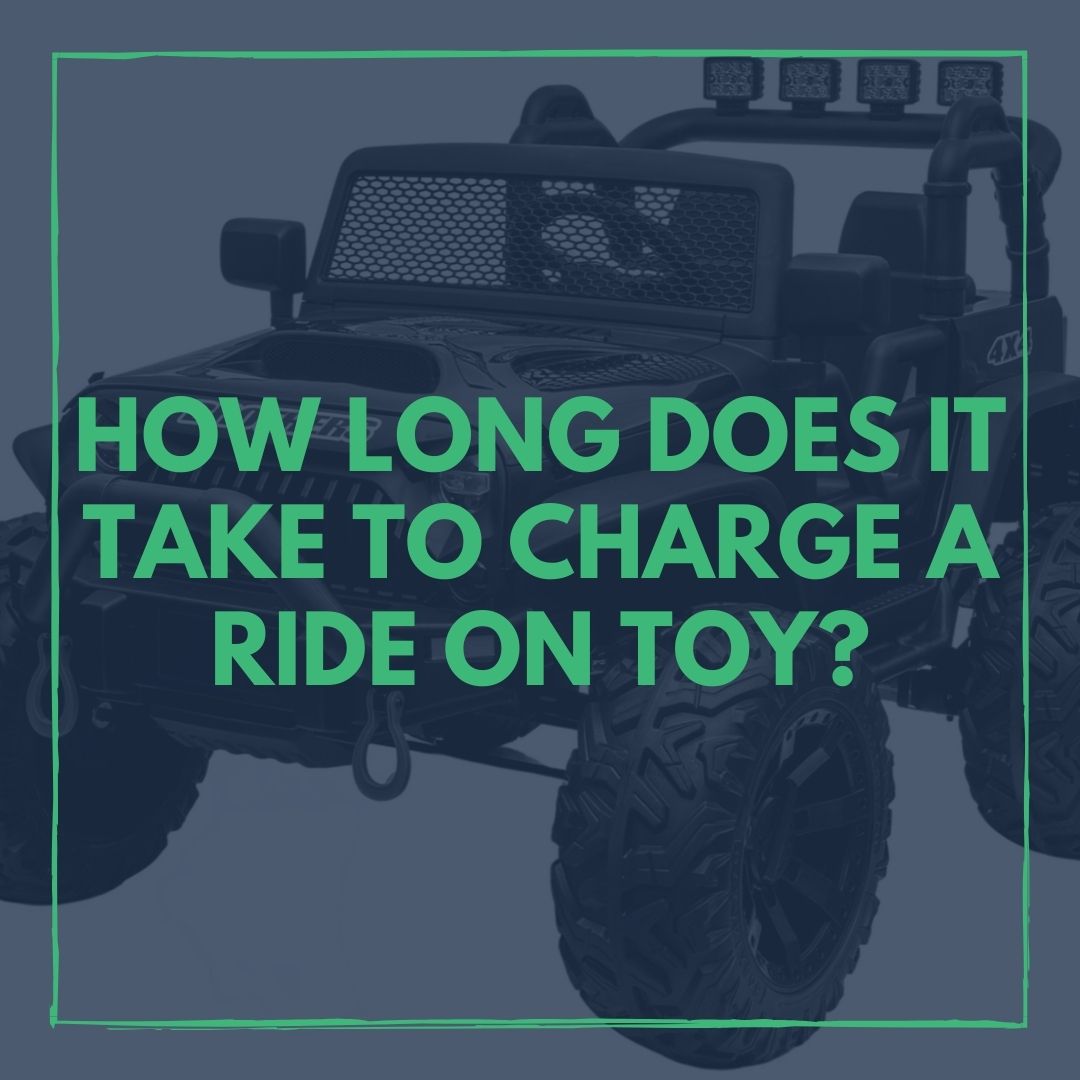Published: 19 August 2021
Updated: 24 March 2025
Wondering how long it takes to charge ride-on toys? It’s a common question when choosing the perfect ride-on for kids, adults, or even pets!
With so many options—like ride-ons for children, adults, and pets—picking the right one can feel tricky.
This guide breaks down charging times for 6v, 12v, and 24v ride-on toys to help you decide what charging method suits you. 
How Long to Charge Ride-On Toys?
Charging time depends on the battery’s voltage. The first charge for a new battery takes longer to condition it, but regular charges settle into a pattern.
Ride-on toys use 6v, 12v, or 24v batteries—check your model’s specs! Times below are approximate; always consult your toy’s manual for exact details.
- 6v Battery: Initial charge 10 hours, regular charge 6 hours.
- 12v Battery: Initial charge 10 hours, regular charge 8-10 hours.
- 24v Battery: Initial charge 10 hours, regular charge 10 hours.
Most ride-on batteries average a 10-hour charge, with 24v models being more efficient.
Related: Here’s How You Know If Your Ride-On Car Is Charging
Ride-On Toy Charging Summary
6v Toys: Initial 10 hours, regular 6 hours.
12v Toys: Initial 10 hours, regular 8-10 hours.
24v Toys: Initial 10 hours, regular 10 hours.
Charging time also varies with motor power and terrain—6v and 12v batteries last 45-60 minutes, while 24v can run 1-1.5 hours.
Maximize playtime with a spare battery—keep it fully charged!
Related: How Long to Charge a 6v 4.5Ah Lead-Acid Battery?
What If I Overcharge?
Overcharging can harm batteries, with effects varying by type—lead-acid and lithium-ion are common in ride-ons.
Lead-Acid Batteries
Most ride-ons use lead-acid batteries, which are prone to:
- Overcharging Risks: Water loss, corrosion, or swelling.
- Temperature Impact: Heat speeds discharge; cold cuts capacity.
Protect them with an auto-shutoff charger and indoor storage.
Lithium-Ion Batteries
Newer models may use lithium-ion, which:
- Have built-in safeguards but need the right charger.
- Tolerate temperature better but thrive at room temp.
Use the manufacturer’s charger and avoid extremes.
| Battery Type | Overcharging Effects | Protection Tips |
|---|---|---|
| Lead-Acid | Water loss, swelling | Auto-shutoff charger, store indoors |
| Lithium-Ion | Charger-dependent issues | Use manufacturer charger, avoid heat |
Safety Tips for Charging
Charge safely to protect your ride-on toy:
- Use a ventilated, dry area away from kids and pets.
- Avoid overcharging—unplug when full (check manual).
- Store at room temp; charge monthly if unused.
- Inspect for damage; keep a fire extinguisher handy.
Spare Battery: Worth It?
Yes! A spare battery extends playtime and keeps fun rolling.
Interchangeable batteries are easy to swap—just keep them charged and check with your retailer if unsure.
Related: How Toy Car Batteries Are Made
Conditioning Your Battery
Condition batteries with a full charge-discharge cycle (up to 3 times) for peak performance.
Related: How Long Do Lithium-Ion Batteries Last?
When to Charge?
Watch for slow speed or weak power. Charge after use or monthly for occasional play.
Battery Warranty
Warranties vary—some offer 1 year, others none. Check specs or contact the seller.
FAQ’s
How long to charge a 6v ride-on toy?
Initial charge takes 10 hours, with regular charges at 6 hours.
Should I get a spare battery?
Yes! A spare extends playtime and keeps the fun going.
What happens if I overcharge my ride-on toy?
Overcharging can cause water loss or swelling in lead-acid batteries—use an auto-shutoff charger.
How do I know when my ride-on needs charging?
Look for slow speed or weak power; charge after use or monthly.
Wrapping Up
Charging ride-on toys right ensures long-lasting fun. Follow these tips for max enjoyment!
Ready to Ride? 🚀
Loved our 2025 guide on charging 6v, 12v, and 24v ride-ons?
Explore more at RiiRoo.com or hit up our Live Chat!







Share:
Has My Battery Run Flat on My Kids Ride On Car? [A Parents Guide]
Your Kids Electric Toys Age By Age Guide For Parents in 2025